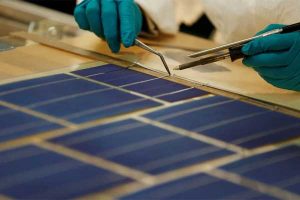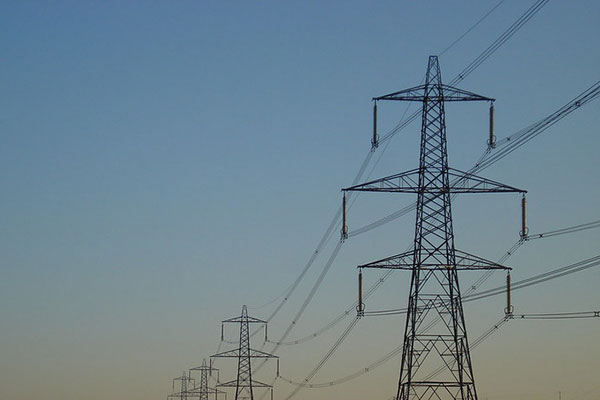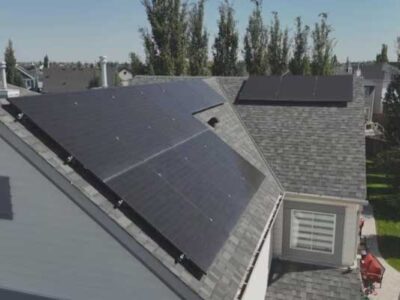- The escalating U.S.-Canada trade war is now taking direct aim at the solar industry, with new tariffs set to drive up costs and complicate supply chains for Canadian manufacturers and developers.
- Companies that rely on cross-border trade for panels, inverters, and raw materials like polysilicon may face significant financial strain, potentially stalling the growth of renewable energy projects.
- With costs rising and supply chains in jeopardy, Canada’s solar industry now faces an urgent question: can it adapt before these tariffs derail its momentum?
February 04th Update: An agreement has been reached to hold off tariffs on Canada and Mexico for 30 days, pulling the North American neighbors back from the brink of a potentially damaging trade war.
The trade war between the U.S. and Canada has taken a new turn, one that could have profound consequences for the solar industry.
Trump’s recent executive order has imposed a sweeping 25% tariff on most Canadian and Mexican imports, with a reduced 10% duty on Canadian energy resources. While the full scope of the tariffed products has yet to be confirmed, legal analysts anticipate that solar panels and related components from Canada will be directly impacted—marking a significant policy shift that could reshape the North American solar market.
How the Tariffs Could Disrupt North America’s Solar Supply Chain

Silfab Solar is a quality international leader in the development, manufacturing and distribution of ultra-high efficiency PV modules with just-in-time manufacturing.
For years, Canada-based solar manufacturers such as Heliene, Silfab, and Canadian Solar have benefited from trade agreements that allowed for relatively smooth cross-border business.
Now, with tariffs likely extending to solar panels, inverters, and raw materials, the industry faces a serious pricing dilemma. In the past, U.S. solar firms were primarily concerned with tariffs on Chinese imports, which have climbed as high as 60% for some solar-related goods.
However, the latest measures introduce a new layer of complexity, targeting key North American manufacturers and potentially limiting the accessibility of affordable solar products in both countries.
As PVBuzzMedia previously reported, one of the most immediate concerns is the effect on project costs. Canadian solar companies that export to the U.S. may be forced to either absorb the tariff cost or pass it on to customers—an increase that could stifle demand and slow the pace of solar adoption.
Additionally, many large-scale solar projects in Canada rely on American-made inverters, racking systems, and electronic components.
If these are included in Canada’s retaliatory tariffs, project developers may find themselves caught in an expensive and unpredictable trade dispute.
Raw Materials and the Growing Challenge of Solar Component Sourcing
Compounding the problem is the increasing challenge of sourcing raw materials. Chinese polysilicon—a critical component in solar cell production—has already been subject to heavy U.S. tariffs, and the latest round of increases will push these duties even higher.
Seven of the top ten global polysilicon producers are based in China, making it difficult for North American manufacturers to secure cost-effective alternatives. While some U.S. solar firms have shifted supply chains to Southeast Asia, antidumping and countervailing duties in that region now further complicate the equation.
Economic Concerns and Shift Toward Domestic Solar Manufacturing

Solar panel manufacturing (Charly Triballeau/AFP/Getty Images).
Beyond the financial strain, these tariffs could also jeopardize jobs and investment in the renewable energy sector. Canada has positioned itself as a hub for clean energy manufacturing, and any prolonged disruption in trade relations with the U.S. could deter new market entrants or expansion efforts.
Solar companies that rely on predictable trade conditions to justify capital investments may now reconsider their strategies, leading to potential slowdowns in production and employment growth.
There is, however, an alternative perspective: some industry leaders believe that these tariffs might accelerate investment in domestic solar manufacturing within Canada.
The Uncertain Road Ahead
If the U.S. market becomes too costly to serve, Canadian firms could shift focus toward local production and supply chains, fostering a more self-sufficient renewable energy industry. The question remains whether such an adjustment could happen quickly enough to offset the short-term economic pain inflicted by these trade barriers.
What is clear is that the latest U.S. tariffs—and Canada’s promised retaliation—are introducing significant volatility into an industry that thrives on stability and long-term planning. With clean energy initiatives gaining momentum globally, the last thing the solar sector needs is a trade dispute that increases costs, disrupts supply chains, and delays critical projects.
Whether this is merely a temporary setback or a long-term obstacle remains to be seen, but for now, Canadian solar businesses must brace for impact.










Comments